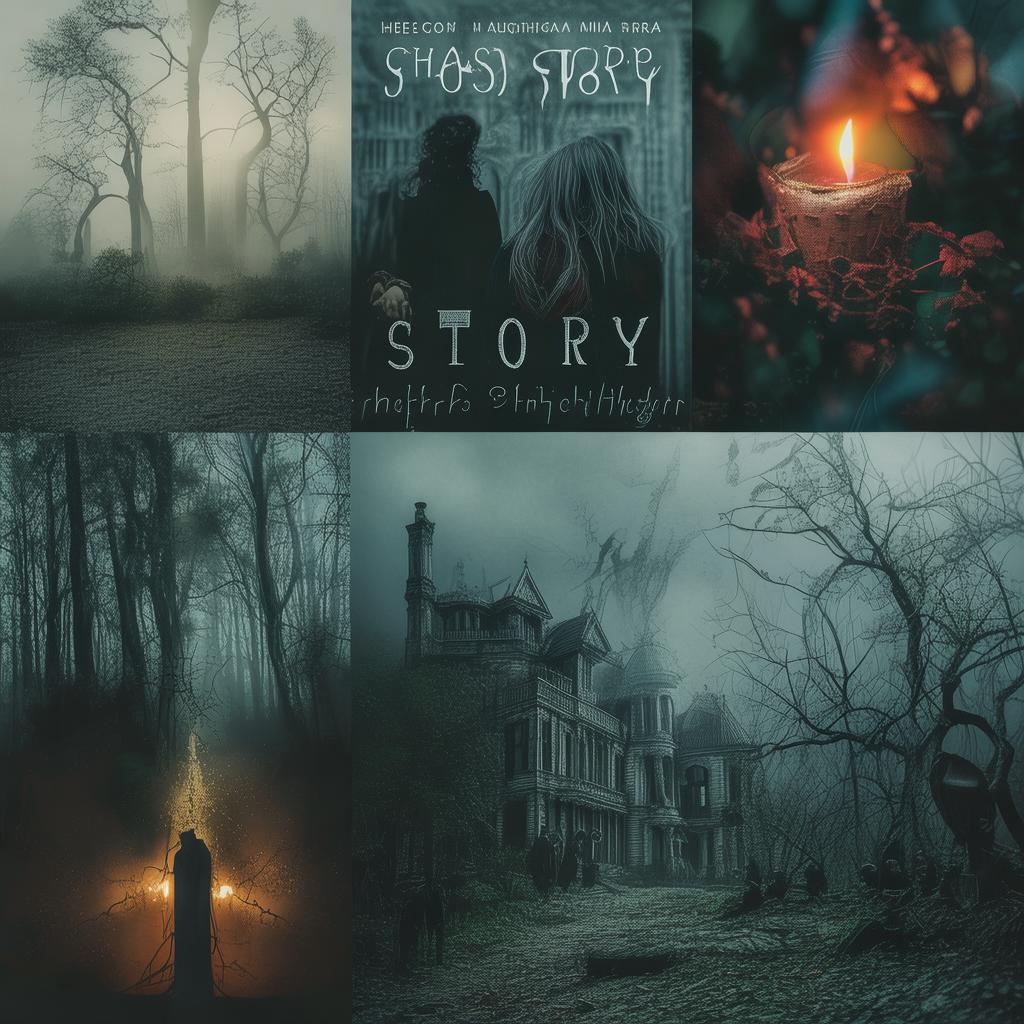The White Face's Sinister Specter: A Haunted Holiday
In the heart of the picturesque English village of St. Mary's, where the cobblestone streets were dusted with snow and the houses glowed with warm, inviting lights, there was an eerie presence that whispered tales of old. It was the White Face—a spectral apparition that had haunted the holiday celebrations for as long as anyone could remember. This sinister specter had become a local legend, whispered about in hushed tones around the crackling hearths of the village's homes.
Amidst the festivities of the season, the village was preparing for its annual Christmas Eve Gala, a tradition that brought joy and community spirit to the otherwise tranquil town. The preparations were in full swing when a young woman named Eliza moved to the village. Her family had been forced to relocate due to circumstances beyond their control, and Eliza found herself thrust into a world where the line between the living and the dead seemed to blur.
Eliza was an artist, her soul deeply rooted in the world of creativity and beauty. Her paintings captured the essence of the human experience, often depicting moments of sorrow and joy with a raw, emotive quality. The village was a canvas, and she was eager to explore its colors and textures, both literally and metaphorically.
Her first evening in the village, as she walked through the snowy streets, she felt an inexplicable chill. She noticed the villagers casting nervous glances at each other, their faces shadowed by the flickering light of the streetlamps. She asked her neighbor, an elderly woman named Mrs. Thistle, about the White Face.
Mrs. Thistle's eyes widened as she recounted the tale of the White Face, a specter said to be the vengeful spirit of a young woman who had been betrayed and murdered during the holiday season centuries ago. The spirit had chosen the festival of love and joy to exact its revenge, haunting the festivities and the hearts of those who dared to ignore its warnings.
As the days passed, Eliza's curiosity grew, and she found herself drawn to the legend. She began to research the history of the village, searching for clues about the young woman who had become the White Face. She discovered that the village had a dark secret: a lineage of betrayal and murder that ran deep within the very soil of St. Mary's.
One night, as she was painting in her room, a ghostly figure appeared before her. It was the White Face, a woman with long, flowing hair and a face so pale it seemed to be made of snow. Eliza was frightened but intrigued. The White Face spoke, her voice like a whisper in the wind.
"You are not like the others," she said. "You have the ability to see beyond the veil, to feel the pain and the joy that resides within the souls of those who live here. Use your gift to uncover the truth and set my spirit free."

Eliza's heart raced as she realized the gravity of the White Face's words. She began to piece together the puzzle of the village's dark past, interviewing the villagers, and uncovering a web of deceit and tragedy that had been buried for generations.
The climax of her investigation led her to the old church in the heart of the village, where she discovered the final resting place of the White Face. As she reached into the earth, she felt the warmth of life return to the cold, forgotten grave. The White Face, no longer a specter of vengeful sorrow, vanished into the night.
The villagers, who had watched Eliza's journey with bated breath, celebrated her bravery. The White Face had been freed, and with her came peace to the village. Eliza's painting of the White Face, now a beacon of hope and forgiveness, hung in the village hall, a testament to the power of truth and the healing of old wounds.
The holidays were brighter that year, not just because of the snow-covered streets and twinkling lights, but because of the transformation that had taken place in the heart of St. Mary's. Eliza had not only uncovered the village's dark secret but had also brought light to the darkness within the human soul.
The village's legend of the White Face would never be forgotten, but it had been redefined. The White Face was no longer a symbol of despair, but a reminder of the strength and resilience of the human spirit. And Eliza, the young artist from afar, had become a part of that legend, her story etched into the annals of St. Mary's for generations to come.
✨ Original Statement ✨
All articles published on this website (including but not limited to text, images, videos, and other content) are original or authorized for reposting and are protected by relevant laws. Without the explicit written permission of this website, no individual or organization may copy, modify, repost, or use the content for commercial purposes.
If you need to quote or cooperate, please contact this site for authorization. We reserve the right to pursue legal responsibility for any unauthorized use.
Hereby declared.









